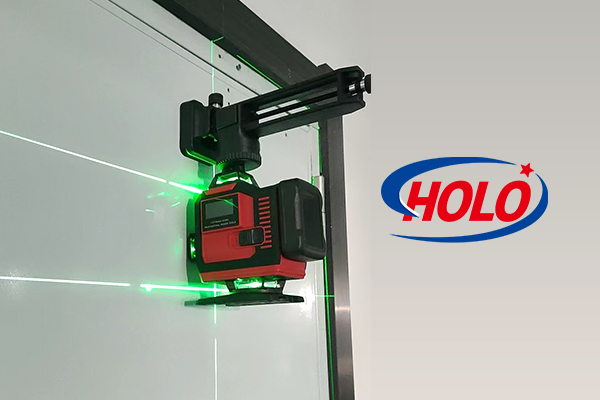On any modern construction site, amid the roar of machinery and the busy figures of workers, you will almost always find a quiet yet precise red or green laser beam. This beam has long replaced traditional plumb lines and ink lines, becoming the most critical bridge connecting design drawings to physical buildings. Construction lasers, seemingly simple tools, have completely transformed the way we build.
Core Principle: Why Is a Single Beam So Important?
The core value of construction lasers lies in their ability to provide an infinitely extendable, absolutely straight, and visible reference datum. Whether horizontal, vertical, or diagonal lines, laser levels can instantly establish a high-precision digital “coordinate system” in space. All subsequent construction activities—from foundation pouring to wall masonry, from pipeline installation to ceiling renovation—revolve around this coordinate system, ensuring every part of the project is accurately aligned.
Comprehensive Types: Precision Tools for Different Scenarios
The construction laser family is extensive, mainly divided into the following categories based on functions:
Line Lasers
The most commonly used type. They diffuse laser beams into horizontal or vertical laser lines through optical lenses, projecting them onto walls or floors. Ideal for interior decoration tasks such as tile laying, door and window installation, and cabinet leveling.
Advanced functions: Many modern line lasers feature multi-point line projection (simultaneously casting crosshairs on front and rear walls) and self-leveling capabilities, greatly enhancing usability and efficiency.
Point Lasers
Also known as laser dot projectors. They project one or more laser dots on surfaces, primarily used for point transfer. For example, accurately projecting positioning points from the first-floor floor to the ceiling for chandelier or pipeline installation.
Rotating Lasers
The “king” of outdoor and large indoor spaces. Through a high-speed rotating laser head, they generate a 360-degree horizontal or vertical laser reference plane. All construction workers within this range can obtain a unified elevation or axis reference.
Application scenarios: Foundation leveling, earth excavation, floor pouring, steel structure installation, etc. Equipped with a laser receiver, their effective ranging can reach hundreds of meters, operating normally even in strong light.
3D Laser Scanners
The crown jewel of construction laser technology. By emitting millions of laser beams, they quickly capture precise 3D point cloud data of construction sites to generate “digital twin” models. Used for existing condition surveys, construction progress monitoring, and comparative verification of completed work against BIM models.
Revolutionary Applications: How Lasers Reshape Construction Processes?
Earthwork and Foundation Stage
Rotating lasers act as the “fixed anchor” of the site, controlling excavation depth and site flatness to ensure absolute accuracy of foundation elevation.
Structural Construction Stage
Line lasers and point lasers guide formwork erection, steel bar binding, and concrete pouring, ensuring the verticality and flatness of columns, walls, and beams.
MEP Installation Stage
Lasers provide precise routing and elevation for the installation of pipelines, air ducts, and cable trays, avoiding spatial conflicts between different trades.
Interior Decoration Stage
This is where line lasers shine. From floor flatness to wall tile verticality, from the horizontal alignment of switches and sockets to ceiling elevation control, lasers ensure the final refined completion quality.
Future Trends: Smarter and More Integrated
The evolution of construction lasers shows no sign of stopping, moving toward greater intelligence:
– Deep integration with BIM: Future lasers will directly read BIM model data and accurately project points, lines, and surfaces from virtual models into physical spaces, realizing “what you see is what you build.”
– Robotization: Autonomously moving robot platforms equipped with laser scanners can independently conduct construction progress inspections and quality assessments.
– AR (Augmented Reality) enhancement: Combined with AR glasses, laser-projected reference lines can be overlaid with digital model information, providing workers with more intuitive visual guidance.
– Green lasers becoming mainstream: Compared to traditional red lasers, green lasers appear brighter and clearer to the human eye, especially in well-lit environments.
Conclusion
Construction lasers have evolved from an “advanced tool” to an infrastructure of modern construction. They not only improve “precision” but also profoundly optimize “processes,” reducing material waste, shortening construction periods, and fundamentally ensuring the quality and safety of buildings. When that beam of light illuminates a construction site, it lights up not just a wall or a piece of land, but the straightest and most efficient path from blueprint to reality.

